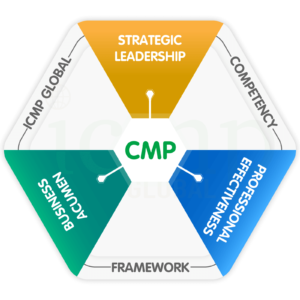HOP – Passport to Prosperity
- About Us
- Professional Certifications
- IT Skills
- Trainings & CPE
- Overview
- Time & Stress Management
- Conflict Management
- Team Building & Leadership Skills
- Finance for Non-Finance Professionals
- Cost Management for Non-Commerce Professionals
- Corporate Governance in Public Interest Companies
- Emotional Intelligence
- Systematic Inventive Thinking
- Professional Ethics
- Entrepreneurship & Innovation
- Consulting Services
- Membership Network
- Think Tank & Advocacy
- About
Us - Professional
CertificationsHouse of Professionals is offering Leadership, Management, and Specialized Certification programs in collaboration with the Institute of Chartered Management Professionals, USA with the objective to enhance the skills set and productivity of individuals. As the vital factor that catch employers are the professional certifications on candidate’s profile which encourage them to select and promote the person from the pool of several candidates.
- IT
SkillsProgramming & Tech
E-Commerce
Graphics & Design
Digital Marketing
Accounting
Office Management
- Trainings &
CPE - Consulting
ServicesIT Services
Engineering Services
- Membership
Network - Think Tank &
Advocacy
- About
Us - Professional
CertificationsHouse of Professionals is offering Leadership, Management, and Specialized Certification programs in collaboration with the Institute of Chartered Management Professionals, USA with the objective to enhance the skills set and productivity of individuals. As the vital factor that catch employers are the professional certifications on candidate’s profile which encourage them to select and promote the person from the pool of several candidates.
- IT
SkillsProgramming & Tech
E-Commerce
Graphics & Design
Digital Marketing
Accounting
Office Management
- Trainings &
CPE - Consulting
ServicesIT Services
Engineering Services
- Membership
Network - Think Tank &
Advocacy
REVIT
Revit is a building information modeling (BIM) software developed by Autodesk that is widely used in the architecture, engineering, and construction (AEC) industry. It provides tools and features for designing and documenting building projects in 2D and 3D. Revit software enables professionals in the AEC industry to create accurate and efficient building models, which can help improve project delivery and reduce errors and rework. Revit software supports the creation of building models with a wide range of elements, such as walls, floors, roofs, doors, windows, stairs, and railings. It also provides tools for creating and managing building systems, such as HVAC, plumbing, and electrical systems. The software supports collaboration and coordination among team members by providing features for work-sharing, coordination, and clash detection. Revit software is widely used in the AEC industry for various building projects, such as residential, commercial, industrial, and institutional buildings. It can also be used for building renovation and retrofit projects. Revit software plays a significant role in the digital transformation of the AEC industry by enabling professionals to design, analyze, and document building projects more efficiently and accurately.
- Interface and Navigation: This covers the basics of the Revit interface, including the ribbon, tabs, panels, and viewports. It also includes navigation tools, such as the view cube, steering wheel, and zoom.
- Creating and Modifying Elements: This covers the creation and modification of various building elements, such as walls, floors, roofs, doors, windows, stairs, and railings.
- Working with Families: This covers the creation and customization of families, which are groups of related elements that can be saved and reused in different projects.
- Building Systems: This covers the creation and management of building systems, such as HVAC, plumbing, and electrical systems.
- Annotation and Documentation: This includes the use of annotation tools, such as tags, dimensions, and notes, to document building projects.
- Visualization and Rendering: This covers the use of visualization and rendering tools to create photorealistic images and animations of building projects.
- Collaboration and Coordination: This includes the use of collaboration and coordination tools, such as shared parameters, work-sharing, and clash detection, to manage and share building project data.
- Proficiency in Revit Software
- Understanding of BIM Principles
- Ability to Create Accurate and Efficient Building Models
- Knowledge of Building Systems and Components
- Awareness of Collaboration and Coordination in Building Design and Construction
Preferably, a person with 03 years of industry experience or on employer recommendation
Flexible options to attend the training programs are available. You may participate in the following manner:
- On-location (managed by HOP or your Employer)
- On-line
For any further information and registration, you may contact on the following:
- For registration, visit us at
House of Professionals L-04 Johar Town, Near Emporium Mall, Lahore. - For more details
Call/SMS/WhatsApp at 03018447766, 03028443914

